
The 'sexy' tale that became a medieval blockbuster
 Getty Images
Getty ImagesIn 11th-Century England, a dark-skinned saint with a promiscuous past became a boundary-breaking cultural and religious icon. A new study is hoping to reassert her place in history.
She was old. She was dark-skinned. As a young woman, she had been promiscuous and enjoyed sex. But after rejecting the world and spending 47 years living naked in the desert, Saint Mary of Egypt became a wise and virtuous teacher of Christian scripture – or so 11th Century readers were led to believe.
When the extraordinary legend of Saint Mary was first translated into Old English from Latin by an unknown author just over a millennium ago, it became the medieval equivalent of a blockbuster, copied multiple times and translated into Old Norse, Welsh, Irish and eventually Middle English.
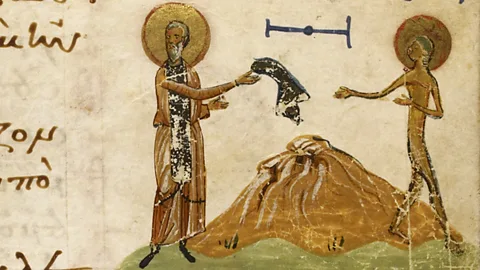 British LibraryAn illustration of Saint Mary and the monk Zosimus in a Greek manuscript in the 11th Century – when her legend also became popular in England (Credit: British Library)
British LibraryAn illustration of Saint Mary and the monk Zosimus in a Greek manuscript in the 11th Century – when her legend also became popular in England (Credit: British Library)Now, Cambridge University is seeking to solve the mystery of how and why the tale of this "rebellious" saint appealed to readers in 11th-Century England, and reassert the rightful place in history of Saint Mary – an elderly Egyptian woman – as a role model for medieval English Christians.
"There has never been a full in-depth study of why this legend resonated in England," says Alexandra Zhirnova, a Cambridge scholar who is giving a talk on Saint Mary of Egypt on 22 March as part of the Cambridge Festival – a showcase of the research underway at Cambridge University. "I want to bring this story into the light, because it dispels a lot of the negative stereotypes that we have heard about the Middle Ages, and how medieval Europeans only have negative perceptions of women, particularly women with darker skin. My talk shines a light on how Mary gets adopted as a saint in England during a time when the Church was very concerned with gender norms and how women ought to behave," Zhirnova tells the BBC.
In this period, adopting a saint was not a formal eclestiastical process. "It just involves people worshipping you as a saint and your legend being known to lots of people," says Zhirnova. Mary of Egypt, who is said to have lived in 4th-Century Egypt, had already attained the status of a saint across Europe. "But it was only when the story was translated into Old English that it became accessible to ordinary people in England," says Zhirnova.
The tale suggests this woman, who breaks every single convention that the Church has established for holy women, is a lesson for men on how to be a better Christian – Alexandra ZhirnovaZhirnova will argue in her talk that the legend directly challenges commonly held views of what a holy woman should look like, and that it counteracts the misogynistic teachings of men of the time who emphasised passive obedience to the Church, particularly in the case of women, and strict adherence to rules governing how women should conduct themselves sexually.
The legend is told from the perspective of an arrogant monk who purports to have met Mary in the desert after she has been living there naked for 40 years.
"She rejects the world to the point that she stops wearing clothes, because she doesn't need them," says Zhirnova. She then becomes "like a priest" to the monk, explaining to him what's wrong with his relationship with God, and quotes to him from scripture, even though she's never read the Bible. Despite her promiscuity – she had multiple lovers in her youth, it is revealed in the story – the monk looks up to her and realises he hasn't understood what a true Christian was before.
"She's held up as an example of fantastic Christian spirituality," Zhirnova notes. Yet at the time, most popular female saints were virgins, who became saints after being persecuted for choosing to stay chaste and devote themselves to God.
The existence of Saint Mary – a sexually experienced, naked, elderly Egyptian woman – utterly undermines this stereotype. Yet, Zhirnova says, "the tale suggests this woman, who breaks every single convention that the Church has established for holy women, is a lesson for men on how to be a better Christian."
Mary's debated identityAlthough she is described as having "blackened" skin, it is not entirely clear whether or not Saint Mary is black, Zhirnova says.
 Getty Images1680 painting The Last Communion of Saint Mary of Egypt by Italian artist Marcantonio Franceschini (Credit: Getty Images)
Getty Images1680 painting The Last Communion of Saint Mary of Egypt by Italian artist Marcantonio Franceschini (Credit: Getty Images)The Old English translation of the tale states she was "extremely black in her body because of the sun's heat".
However, medieval readers did not understand or perceive racial differences in the way we do today. "At that point, they believed that people who have dark skin are dark because they live in places with a lot of sun. So, for example, Ethiopia is a sunny place, therefore people from there have darker skin," Zhirnova says.
Whether or not Saint Mary is black or just tanned may not have been an issue medieval readers were particularly concerned about. "I truly don't know to what extent it would have been important to them to make a distinction between being born with dark skin and having it due to being outside a lot, but I think certainly they would have thought of her as culturally different," Irina Dumitrescu, professor of English Medieval Studies at the University of Bonn, tells the BBC.
It's an extremely sexy story. There's a lot of erotic detail in it. It's a little bit ribald and tantalising – Irina DumitrescuIn her opinion "what's important about her dark skin is that it demonstrates that the culture of medieval England is a more cosmopolitan culture that many people tend to assume. They have trade that goes wider than people might think, and they're interested in learning and stories from North Africa and the Middle East – so their imagination encompasses these areas."
She adds that lighter skin was idealised in women in medieval England and associated with virginity: "There is often a connection made between brightness of colouring – blonde hair, for example – and purity. So Mary's darker skin could be associated with a kind of sexuality. That sense of difference is there."
Why Mary's story was such a hitDumitrescu believes that descriptions of Saint Mary's "very naughty" youth may account for some of the legend's popularity among medieval readers. "It's an extremely sexy story," she said. "There's a lot of erotic detail in it. She talks about going on a boat to the Holy Land from Egypt, and how she taught all the people on the boat unspoken lewd acts. It's a little bit ribald and tantalising."
She thinks another reason this remarkable legend became so popular was because "it's a very human thing to want to know that God also loves imperfect people… The Mary of Egypt tale has a very important lesson that you cannot teach with tales of virgin saints – which is God's grace. The Church has always needed stories of sinners who can be saved."
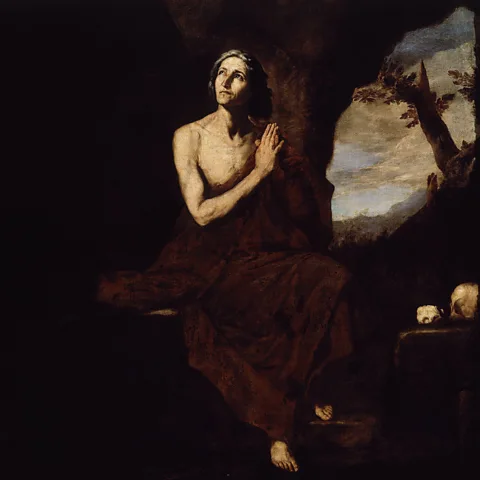 AlamyA 17th-Century portrait of Mary: the legend describes her as having "blackened" skin but she has been depicted visually with varying skin tones (Credit: Alamy)
AlamyA 17th-Century portrait of Mary: the legend describes her as having "blackened" skin but she has been depicted visually with varying skin tones (Credit: Alamy)At a time when many of the monastic readers and copyists of the story were living out their whole lives enclosed in an institution, the legend of Saint Mary presented "a very disturbing figure", according to Dumitrescu, which may be part of her appeal.
Unlike other tales of saints who went off to the desert to devote themselves to God (an ascetic practice known as desert monasticism), Mary of Egypt does not stay in one place. "She is quite unusual, because she's not even a hermit in a little cave somewhere. She just wanders the desert. She roams freely. She becomes one with nature. She's naked. She doesn't seem to be a regular person in any way, even in the way hermits are," says Dumitrescu. "She's rogue."
More like this:
• The smutty medieval tales that broke taboos
• Five ways to spot a fake masterpiece
• The wild story of London's all-female criminal gang
For devout Christians living "very regulated" lives, the idea of an exotic naked woman roaming freely in the desert and communing with God would have been exciting and "kind of tempting", Dumitrescu adds. "She is very much an anti-institutional figure. And I think it's absolutely fascinating to have a vision of this woman who is unlike anything women are told to be, and yet God loves her the most."
Zhirnova’s research suggests this moral may lie at the heart of the tale's popularity in medieval England. Around the same time the story was translated and began to be circulated, there was a power struggle in the Church that threatened to restrict the freedoms of Christian women who were living in monasteries and had devoted themselves to God.
Its possible role in a church battleBenedictine reformists like the English abbot Ælric of Eynsham were advocating for men and women who worked side by side in monasteries – often under a female leader – to be separated. "There was a long tradition in England at that time of what they called double monasteries, so mixed gender communities. But the reformers said this should not be allowed, because it creates temptation for both men and women," said Zhironova.
These reformers wanted the visibility of chaste monastic women to be restricted for their own protection, and for these women to be shut away and separated from monastic men. Wise elderly women, who were in positions of power in the monasteries, would be particularly affected. "Instead of having these prominent positions, they had to be enclosed within the walls of the monastery, and not really allowed to leave," says Zhirnova. "That also restricted a lot of the activities that religious women could be involved with, such as teaching, writing manuscripts and preaching to lay people."
The legend of Saint Mary of Egypt, known as the Life of Mary, may have been translated or circulated by people who were not in favour of such reforms, Zhirnova believes. "In this legend, we see a woman who resists standard notions of authority. Women aren't allowed to teach – but Mary teaches."
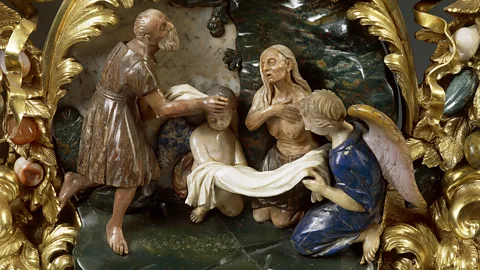 Getty ImagesAn 18th-Century Italian reliquary (or relics container) depicting Saint Mary (Credit: Getty Images)
Getty ImagesAn 18th-Century Italian reliquary (or relics container) depicting Saint Mary (Credit: Getty Images)Saint Mary also upended standard contemporary notions of female saintly beauty and sexual behaviour, such as those put forward in tales translated by Ælric at the same time that the Life of Mary was translated. "Whiteness is associated with beauty in this period in medieval England, and a lot of the saints that readers will have heard about have white skin, youth and beauty – these qualities go hand in hand," says Zhirnova.
That tells us medieval people in England were open to models of sanctity that weren't white, young and obedient.
"One of the key things about Mary is that she resists this almost objectification of female sanctity. She is purposefully not fitting this standard. And I think her dark skin fits into that and is part of her image as rejecting all of the other expectations of holy women."
Zhirnova hopes that her study will do what the Life of Mary did in 11th-Century England and make people more aware of Saint Mary, and her way of being a "pious Christian". Just as Saint Mary defied religious establishment norms, the story suggests, so "she has more spiritual authority than the virginal man she teaches," says Zhirnova. "She's a rebellious saint."
Zhirnova also hopes her study will challenge some of the stereotypes about England in the Middle Ages that are perpetuated by the far right. "Many people on the far right use the Middle Ages as an example of a time when everybody was white and everybody praised white skin as the ideal," says Zhirnova. "In the life of Mary, we see a saint who does not adhere to medieval conceptions of Christian piety as white. That tells us medieval people in England were open to models of sanctity that weren"t white, young and obedient. They were open to the otherness of Mary."
Mary of Egypt: A Black Saint in Anglo-Saxon England?, a free talk by Alexandra Zhirnova about her research, will take place at 4.15pm on 22 March during the Cambridge Festival, along with hundreds of other talks about the world-leading research happening at Cambridge.
--
If you liked this story, sign up for The Essential List newsletter – a handpicked selection of features, videos and can't-miss news, delivered to your inbox twice a week.
For more Culture stories from the BBC, follow us on Facebook, X and Instagram.
Women's HistoryHistoryArtReligionFeaturesWatch Why we're still talking about Maud Wagner
Why we're still talking about Maud WagnerHow America's first professional female tattooist broke through into an art form historically dominated by men.
4 Mar 2025History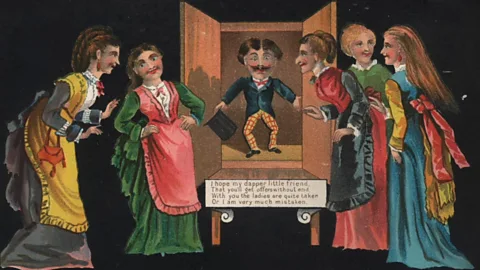 The insulting 'Vinegar Valentine' of Victorian England
The insulting 'Vinegar Valentine' of Victorian EnglandValentine’s Day is thought to celebrate romance but rude cards soured the holiday for its recipients.
14 Feb 2025History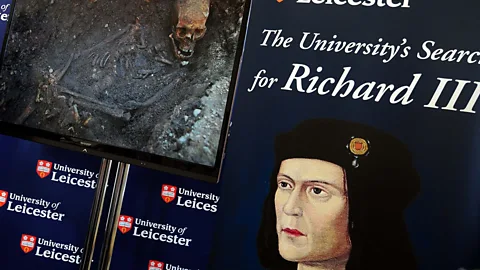 Richard III: The 'accidental' photo of a long-lost king
Richard III: The 'accidental' photo of a long-lost kingWhy a famous photograph of King Richard III's skeleton was a happy 'accident'.
11 Feb 2025History The WW2 experiment to make pigeon-guided missiles
The WW2 experiment to make pigeon-guided missilesAn unexpected WW2 experiment by behaviourist B F Skinner proved that pigeons could be used for missile guidance.
4 Feb 2025History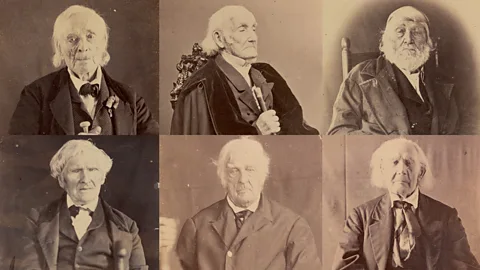 America's last Revolutionaries: Rare photos of US patriots
America's last Revolutionaries: Rare photos of US patriotsHow a dwindling group of veterans from the American War of Independence were featured in early photographic form.
7 Jan 2025History Idris Elba on moment he learned about Mandela's death
Idris Elba on moment he learned about Mandela's deathThe actor recalls being at the Mandela film premiere when he heard the anti-apartheid politician had died.
7 Dec 2024History Mary Mallon: 'The most dangerous woman in America'
Mary Mallon: 'The most dangerous woman in America'How Mary Mallon, an Irish cook for New York's elite, became known as the 'most dangerous woman in America'.
17 Nov 2024History World War One relics live on in the fields of Europe
World War One relics live on in the fields of EuropeThe battlegrounds of World War One are still giving up their revealing evidence of bitter fighting.
12 Nov 2024History The picture that tells a lesser-known chapter of US history
The picture that tells a lesser-known chapter of US historyHow a 1892 photo from Rougeville, Michigan, became the most iconic image of the bison massacre in America.
22 Oct 2024History The history of swing states in the US
The history of swing states in the USThe US Presidential elections did not always depend on just these seven states.
21 Oct 2024History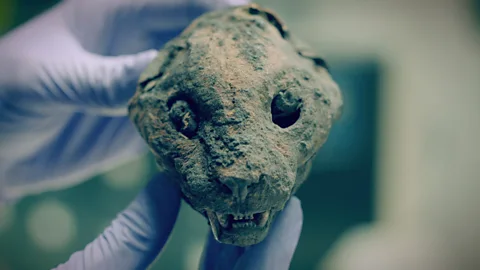 Why tonnes of mummified cats ended up in England
Why tonnes of mummified cats ended up in EnglandIn 1890 an estimated cargo of 180,000 ancient felines, weighing 19.5 tonnes, were auctioned off in Liverpool.
18 Sep 2024History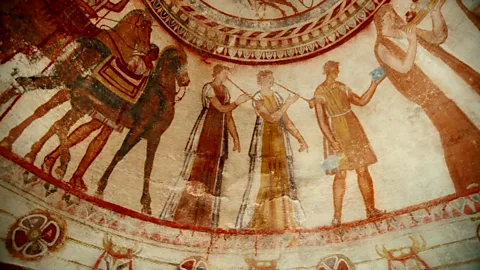 Inside the ancient royal tomb found by accident
Inside the ancient royal tomb found by accidentThe Thracian Tomb of Kazanlak was accidentally discovered by Bulgarian soldiers digging up shelters in 1944.
11 Sep 2024Archaeology Varna Necropolis: World's oldest gold treasure
Varna Necropolis: World's oldest gold treasureThe Varna treasure is considered the world's oldest human processed gold, dating back 6,500 years.
10 Sep 2024Archaeology The giant 350-year-old model of St Paul's Cathedral
The giant 350-year-old model of St Paul's CathedralHiding in a London cathedral is an intricate wooden mock-up of Sir Christopher Wren's masterpiece.
5 Sep 2024History Uncovering the sunken relics of an ancient city
Uncovering the sunken relics of an ancient cityBettany Hughes goes underwater in search of ancient archaeological finds in historic Sozopol, Bulgaria.
4 Sep 2024Archaeology Texas fever: The lesser-known history of the US border
Texas fever: The lesser-known history of the US borderIn 1911, a fence was constructed on the US-Mexico border. But its purpose was not to stop humans.
18 Aug 2024History Century-old Olympics footage brought back to life
Century-old Olympics footage brought back to lifeA look through footage from the Paris 1924 Olympics gives viewers a chance to reflect on how much has changed.
9 Aug 2024Sport The rare medieval street about to reveal its secrets
The rare medieval street about to reveal its secretsOne of Europe's oldest residential streets hides in the heart of the English countryside.
23 Jul 2024History Shahmaran: The mythical symbol inspiring Turkish artists
Shahmaran: The mythical symbol inspiring Turkish artistsThe 'Shahmaran', half-woman and half-snake, is a mythical figure popular in the folklore of Turkey.
12 Jul 2024Art & Design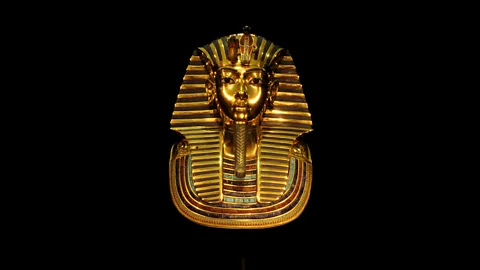 Tutankhamun: The first ever view inside the tomb
Tutankhamun: The first ever view inside the tombOne month after the famous discovery, photographer Harry Burton recreated the first view of Tutankhamun's tomb.
5 Jul 2024HistoryMore1 hr ago Mural celebrating town's railway past unveiled
Mural celebrating town's railway past unveiledStreet artist, Akse P19, completes his photorealistic mural created in tribute to the town's heritage.
1 hr agoStoke & Staffordshire2 hrs ago Wynton Marsalis on the liberating spirit of jazz
Wynton Marsalis on the liberating spirit of jazzAward-winning musician Wynton Marsalis tells Katty Kay how growing up surrounded by music shaped his own journey with jazz.
2 hrs agoCulture2 hrs ago How to optimise your slumber
How to optimise your slumberTo celebrate World Sleep Day, here's our science-based guide to getting the best slumber you can – from varying sleep with the seasons to taking inspiration from the past.
2 hrs agoFuture4 hrs ago An 'unforgettable' sweet with a sinister history
An 'unforgettable' sweet with a sinister historyAs millions of people break their Ramadan fast, many believers around the world reach for a wildly popular dish tied to an unbelievable legend.
4 hrs agoTravel5 hrs ago Colliderfest: Everything you need to know
Colliderfest: Everything you need to knowThe events will bring "an explosion of creativity and curiosity" to Hull from 13 to 16 March.
5 hrs agoHull & East YorkshireAP by OMG
Asian-Promotions.com |
Buy More, Pay Less | Anywhere in Asia
Shop Smarter on AP Today | FREE Product Samples, Latest
Discounts, Deals, Coupon Codes & Promotions | Direct Brand Updates every
second | Every Shopper’s Dream!
Asian-Promotions.com or AP lets you buy more and pay less
anywhere in Asia. Shop Smarter on AP Today. Sign-up for FREE Product Samples,
Latest Discounts, Deals, Coupon Codes & Promotions. With Direct Brand
Updates every second, AP is Every Shopper’s Dream come true! Stretch your
dollar now with AP. Start saving today!
Originally posted on: https://www.bbc.com/culture/article/20250313-how-the-legendary-tale-of-rebel-saint-mary-of-egypt-became-a-medieval-blockbuster?ocid=global_culture_rss
